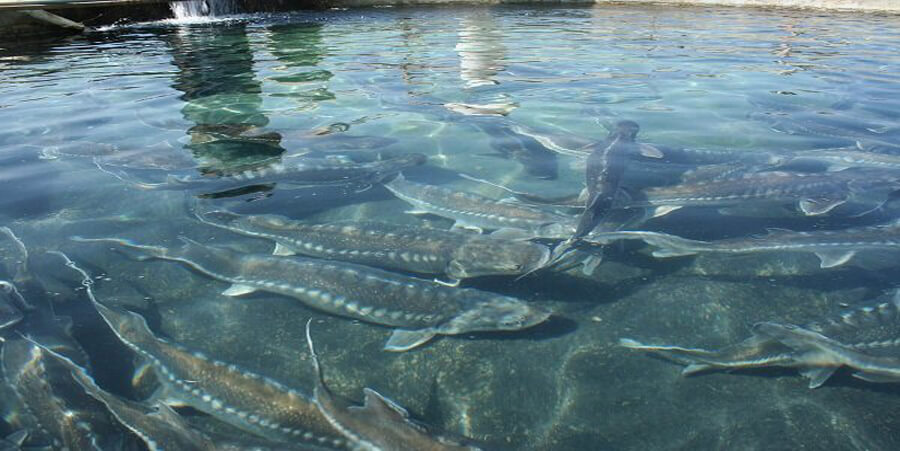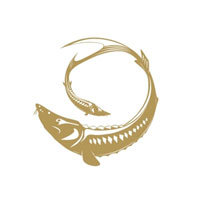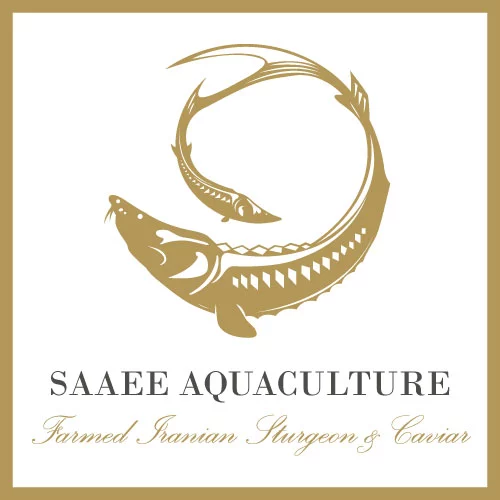
Where is caviar from?
The sturgeon is one of the most ancient and valuable fish in the world, its first fossil record dating back to the upper Cretaceous. The sturgeon usually lives in freshwater, coastal waters and inner seas throughout the Islamic Republic of Iran (hereinafter: Iran), Kazakhstan, Azarbyjan, Romania, the Russian Federation (hereinafter: Russia), Turkmenistan, Turkey, Ukraine, other European countries and North America. The sturgeon industry is extremely important for many of these countries in terms of income generation and employment opportunities.
What country has the best caviar?
The biggest producing countries have been farming caviar to preserve local (or endemic) species. The demand for caviar has increased in recent years because of its high nutritional and commercial values. Consequently, the wild population of sturgeon has decreased. This has shifted the balance of supply of caviar from wild sturgeon to more from farmed fish.
The best quality caviar comes from the countries around the Caspian Sea, home to the Beluga, Osetra, and Sevruga sturgeon. For centuries, Russia and Iran have dominated the caviar market, producing the highest quality, and most in-demand, caviar in the world. Nowadays, the three largest countries producing farmed are China (nearly 40 tons), Italy (30 tons) and France (25 tons). Then come the USA, Germany, Bulgaria, Poland and Israel which produce 5 to 20 tons of caviar per year.
How is caviar processed?
Non-ovulated eggs separated from the connective tissue of ovaries. Ovulated eggs may be used from aquaculture sturgeons.
Caviar is the product made from fish eggs of the Acipenseridae family by treating with food grade salt.
The product is prepared from fish eggs of sturgeon fishes belonging to the Acipenseridae family. The eggs are of about one size and evenly and characteristically colored according to the species used. Colour can vary from light grey to black or from light yellow to yellowish grey. Brownish and greenish shades are permissible. The product is made with addition of salt and is intended for direct human consumption. The salt content of the product is equal or above 3 g/100g and below or equal to 5 g/100g in the end product.
Processing Caviar
The product, after suitable preliminary preparation of the caviar, shall be subject to treatment or conditions sufficient to prevent the growth of spore and non-spore forming pathogenic microorganisms and shall comply with the conditions laid down hereafter. The eggs are appropriately treated to remove adhesive layer and to harden the shell. If hormones are used to produce ovulated eggs, they should be approved for use by the competent authority having jurisdiction.
The product shall be prepared by salting fish eggs with food grade salt. During packaging, storage and retail, the product temperature is between +2 and +4°C, whereas for wholesale business, including storage and transportation, the temperatures are between 0° and -4°C. Freezing as well as frozen storage of caviar is not permitted unless the deterioration of quality is avoided.
The product shall be packed in:
- metal tins coated inside with stable food lacquer or enamel;
- glass jars;
- other suitable food-grade containers.
Re-packaging of the product from larger to smaller containers under controlled conditions which maintain the quality and safety of the product shall be permitted. No mixing of caviar from different sturgeon species or lots shall be permitted.
Caviar harvesting methods
Almost all caviar is harvested from dead fish. Fishermen wait until the mature female sturgeon (which are at least 10 years old) are ready to extraction and lay their eggs. Once caught, the sturgeon will be transferred to a bleeding room, where workers slit her open and remove her eggs. The caviar is cleaned to prevent spoilage and then packed up; the rest of the fish is sold for flesh.
Fish farmers who raise sturgeon for caviar sometimes use a surgical procedure to remove eggs from a female without killing her. To foster reproduction in captivity, aquaculturists will induce ovulation in a female with hormone injections and then make a small incision in her abdomen. Eggs that have already detached from the ovaries can be scooped out with a plastic spoon or squeezed out into a bowl.
Most farmers use this technique only to obtain eggs for insemination, but some Russians do live-harvest eggs for food. In some cases, a farmer might perform a Caesarean on a fish that hadn’t ovulated. He could cut out some but not all of her eggs before sewing up the fish and putting her back in the water. A farmer might also induce ovulation, squeeze out the loose eggs, and then use a novel process to restore the integrity of their outer coverings.
Caviar breeding methods
In autumn, the females with gonads at maturity stage III, III–IV and IV, and males at stage III–IV and IV are selected for possible use in reproduction. The males of beluga (H. huso) after the current-year spawning should not be reserved for the next spawning campaign. While doing the autumn assessment, it is desirable to separate from the major group of mature females.
The autumn assessment of broodstock and older replacement is performed as the water temperature decreases to 12 °C, at which point feeding of fish is usually stopped
To select the females during the autumn assessment, it is optimal to apply a noninvasive ultrasonic express technique for determining gonad maturity stages. In the absence of an ultrasonic examination scanner, the selection is performed by bioptical, operative or endoscopic study of gonads, which requires much more time and results in fish damage. The proper assessment requires a good awareness of sturgeon gonads development stages.
Gonad maturity stages in sturgeons
At present, few classifications of gonad maturity stages have been developed. These vary in details and the number of stages.
It is well known that external sexual dimorphism is not apparent in sturgeon before sexual maturity. At present, different techniques of immature sturgeon sexing and gonad staging are available, apart from the ultrasound methods. Among them are:
• Biopsy and closely related methods;
• Endoscopy;
• Immunochemical assays (sex steroids level analysis);
• Method of Fourier transform infrared spectroscopy; and • morphometry
Caviar processing methods
Various techniques are established to process sturgeon roe to caviar. These processing techniques have significant impact on product composition and quality and thereby marketability.
Caviar is a processed salted fish eggs also called as roe. It is made from different varieties of fish.
Sturgeon fish is the type of fish that is being used for this gourmet. It uses different varieties of Sturgeon fish like Huso Huso, Siberi. Color and size of roe and method of caviar processing are classifying items for caviar.
Here are the types of caviar processing method in making caviar:
1. Malossol process. Experts often prefer this kind of processing method in making caviar. Malossol caviar means lightly salted. Fresh caviar usually has a maximum of five percent salt. Today, caviar’s salt content is much lesser, approximately less than three percent. This type of caviar is considered a high quality type. It is the finest process and tends to be more expensive.
2. Semi-preserved or salted caviars. This type of caviar usually has salt content of eight percent. It has a longer shelf life because of its high salt content. However, it compromises its taste with longer preservation life. This is considered the traditional process.
If Caviar is made from Salmon, skin of the roe is being removed after which it will be pressed manually in to a screen. The skin is being separated to retain flavor, taste and decomposition. However, some residue is retained in the roe, which tends to affect the taste, flavor and decomposition process of the caviar. Because of this, makers put more salt and preservatives in order to prolong the preservation or shelf life of the caviar.
3. Pressed Caviar. It is considered the second best in high quality caviar. It is usually made from overly ripe roe, which sometimes are damaged and too soft. It has a high salt content and is pressed to a consistency like jam. It is one of the favorite types of caviars because of its strong and concentrated flavors.
4. Pasteurized Caviar. It is made from fresh caviar, which is packed in glass jars for longer preservation. Taste and texture is usually compromised. It is treated in high temperature and vacuumed packed to be put in glass jars. Unlike with the traditional or salted processing of caviars, this method tends to preserve the flavor and taste. It is the improved process of the traditional method where it can lengthen the preservation or shelf life of the caviar. This is considered a much better process in preserving the shelf life of caviars.
In general, salt content of Caviar depends on the grade or also known as size of the roe, the weather, and condition. Some caviar has borax content aside from the salt content.
There are two types of Caviar production process. These are:
1. Traditional Caviar Production Process. It is a process of separating the skin from the salmon eggs using manual labor. A maximum rate of twenty-five percent for grade A product is being lost with this process. Less than fifty percent is being lost in grade B product and a maximum of seventy percent is being lost for grade C product.
2. East Point Caviar Production Process. It is a process of separating the skin from the salmon eggs using a machine. The machine is a specially designed tool for making caviar. This process reduces the lost rate of grade A product to a maximum of ten percent.
Fifteen percent for grade B and a maximum of thirty percent for grade C. Ozone that is in a cold brine solution is being added to sanitize more the production process.
Salmon Caviar’s red succulent eggs are mild, which comes from a natural sea gift that is considered as high in quality. It is very nutritious, which contains certain vitamins, protein and amino acids. Caviars are considered cakes that restore power and provide longer life.
Production of Caspian Sea Caviar
The sturgeons of the Caspian Sea are considered highly valuable species. The Caspian Sea has traditionally been regarded as the sea of sturgeon since it produces more than 90 percent of the world’s caviar. Despite a remarkable decline of sturgeon numbers over recent years, the Caspian Sea still continues to be of considerable importance in sturgeon fisheries.

